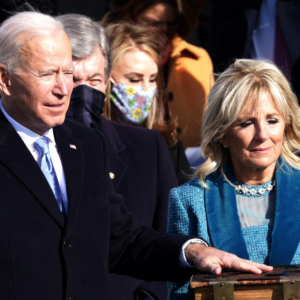In October, 2012 Hurricane Sandy struck the East Coast of the United States inflicting damages estimated at more than $50 billion dollars. The superstorm damaged over 300,000 housing units in New York City. While many recovery efforts have been long underway, the home repairs anticipated under the city’s Build it Back Program have yet to significantly materialize and nonprofit volunteer-based organizations, which traditionally fill the gap in disaster reconstruction between government assistance and homeowner capacity, are encountering a new obstacle to their repair efforts – uncooperative insurance markets.
Nonprofit organizations active in disaster repair have faced difficult insurance markets in post-Sandy New York City. Many organizations have encountered challenges in obtaining the level of insurance required by donors or government to perform repairs on a project. Moreover, insurance premiums are significantly higher than in other parts of the country. Reese May, Director of East Coast Operations for the St. Bernard Project, a nonprofit organization active in post-Sandy repair efforts, reports that “liability premiums in New York City are roughly 600% more than other communities where St. Bernard Project works.” Indeed many organizations have revealed that high insurance premiums have adversely affected their reconstruction work, increasing the cost per home and slowing or stalling repair efforts as nonprofits struggle to meet new costs.

High-elevation workers at the site of the closed St. Vincent Hospital in Manhattan,
(Michael Appleton for The New York Times)
High construction liability premiums are not a new phenomenon in New York. Contractors and builders report that insurance prices in the city have long been higher than the national average. Many actors point to the general culture of litigation found in New York City. The general argument is that insurers fear the litigiousness of workers and the plaintiff-friendly state laws, and respond accordingly. Some blame the high premiums on New York State Labor Law 240 or “the Scaffold Law” which generally imposes strict, or absolute, liability on the employer in the event of a workplace accident. Opponents of the law argue that the law is driving up liability insurance prices and is causing other insurers to leave the market in New York City. However, if and how Labor Law 240 directly effects nonprofit volunteer organizations – either in the eyes of the law or those of insurers – has not been clearly established. Both supporters and opponents of the Scaffold Law point out that there is a lack of transparency in how insurance companies set their rates, making it difficult to assess what factors are truly causing high insurance prices.
Other factors may also be behind the current insurance market. High population density in the city certainly entails a greater level of risk for construction projects. In addition, many nonprofit organizations acknowledge that the nature of some of their activities, such as asbestos and mold abatement, and the structure of their organizations, notably the use of volunteer workers, are likely seen as too high of a risk for insurance brokers, who are looking to minimize risk. Insurance companies also experienced significant losses during Sandy and may be reticent to take on additional liability associated with the hurricane.
In spite of delays and unanticipated expenses, many nonprofit organizations are still forging ahead with their efforts in post-Sandy repair. Now, however, is the time to craft a real solution that will help disaster repair nonprofits react to future disasters effectively and with immediacy. The first step is generating publicity and understanding: current awareness on the part of policy-makers, donors, and the general public is minimal. The movement to reform Labor Law 240 has become increasingly newsworthy in recent years, resulting in a recent New York Times story, amongst others. The disaster repair insurance issue, however, is not part and parcel of the Scaffold Law issue. Rather than conflate the two, it may be helpful to collaborate with the reformers, but perhaps more importantly, we should learn from their successes in garnering public attention.
Educating policymakers, politicians, academics, and donors will be integral. It is also important that nonprofit organizations gain a better understanding of the underlying causes of the insurance problem. This should be done through bringing together subject-matter experts, practitioners and stakeholders of every shade for conversation, learning, and eventual problem solving. Ultimately the solution may require statutory reform such as a Good Samaritan law, captive insurance solutions for relevant nonprofits, the creation of a national insurance solution with economies of scale, or the legislation of a carve-out of volunteers from the Scaffold Law. Before any solution, or combination of solutions, can be decided upon, much more is required in terms of research and transparency. The anecdotal data about insurance premiums is damning indeed, but comprehensive academic research is needed and a serious push must be made towards insurance companies providing disaggregated data. In addition, there is much that is not understood about this particular situation. How does the law apply to volunteers? Are current insurance markets specific to New York, or indicative of a new nationwide trend? Hopefully a concerted research effort can begin to address these uncertainties.
A full year and a half after Hurricane Sandy, many homes have yet to be repaired. May concedes that insurance is a necessary component of nonprofit rebuilding work but adds that current insurance premiums have “proven cost-prohibitive for many recovery groups who want nothing more than to return hard-working families to their homes.” As New York City administrators attempt to ensure that they are prepared for the next big storm, the nonprofit insurance dilemma is still unresolved. Although the issue of expensive insurance premiums may seem niche, without a swift and effective resolution to the problem at hand, current and future rebuilding efforts will likely be further inhibited.






